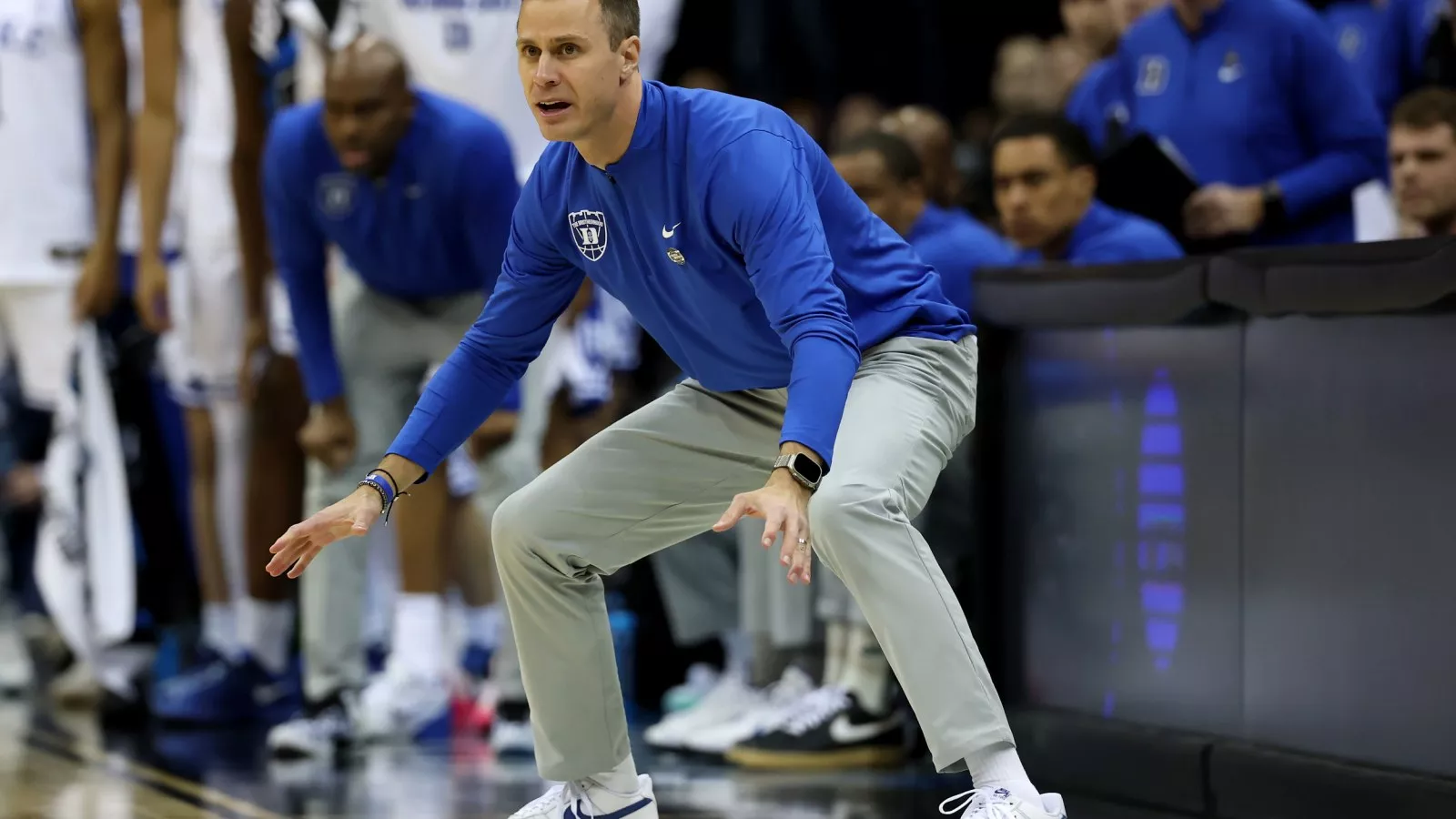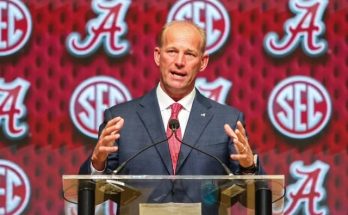Duke basketball, under the leadership of head coach Jon Scheyer, has endured another tough blow as the NBA Draft continues to reshape the college basketball landscape. What was expected to be a promising, possibly dominant roster for the 2025-26 season has now taken a significant hit. With yet another key player declaring for the NBA Draft, Scheyer faces an uphill battle in maintaining Duke’s place as a perennial powerhouse in college basketball. The latest departure has sent ripples throughout the program and stirred concerns about what lies ahead.
Scheyer took over the reins from the legendary Mike Krzyzewski with considerable expectations. He has delivered on some fronts—deep tournament runs, elite recruiting classes, and a clear vision for the program’s future. But now, as more players continue to test the professional waters, the young coach finds himself navigating the brutal realities of the modern college game: elite talent cycles through fast, and the pressure to reload never lets up.
Duke had been quietly building what many thought could be one of the most complete and experienced rosters in recent memory. After a strong showing in the 2024-25 season, including a Sweet 16 appearance, several Blue Devils were projected to return and anchor the team’s next campaign. The core group included high-level scorers, versatile wings, and a veteran backcourt that many insiders believed could compete for a national title. That vision has now been compromised.
The most recent declaration for the NBA Draft was both expected and painful. A projected first-round pick with immense upside, the player’s departure officially closes the door on what could have been a top-tier roster. His decision follows a trend seen across college basketball, where players are increasingly inclined to pursue professional opportunities—sometimes even at the cost of team cohesion and championship potential. For Duke, this means reworking the blueprint mid-build.
Scheyer has already seen his fair share of roster turnover in his short tenure. The days of three- and four-year stars sticking around are largely over, and no program is more emblematic of that shift than Duke. While Krzyzewski once had the luxury of developing stars over several seasons, Scheyer must contend with the one-and-done model and the additional complications introduced by NIL, the transfer portal, and fluctuating draft projections.
Losing a player of this magnitude doesn’t just affect the starting lineup. It alters rotations, affects recruiting strategy, and can disrupt locker room dynamics. Scheyer now faces the challenge of recalibrating a roster that was once the envy of the ACC. Even with a top-five recruiting class, the departure of an established, high-impact player creates a leadership void that can’t easily be filled by incoming freshmen—no matter how talented they are.
The fanbase, long accustomed to excellence, now finds itself in a state of limbo. Optimism lingers, but so does a nagging sense of what could have been. The excitement that built throughout the offseason has dulled. The idea of returning multiple All-ACC caliber players with championship aspirations was a tantalizing one. But the dream has taken a hit—again. In back-to-back offseasons, Scheyer has watched his plans be rerouted by draft declarations and unforeseen exits.
The timing couldn’t be worse. As other programs around the country retain key players or land major commitments from the portal, Duke appears to be taking on water. With every departure, the margin for error shrinks. The pressure to develop talent quickly intensifies, and the spotlight on Scheyer grows hotter. While it’s unfair to judge a coach too harshly for players going pro—a testament to both their talent and his development—there is still an unavoidable sense of deflation that comes with each exit.
This isn’t to say Duke’s hopes for the upcoming season are doomed. The program still boasts elite talent, a strong recruiting class, and the infrastructure to compete at the highest level. But the recent draft decision removes a key pillar from their foundation. Replacing that production, leadership, and intangibles won’t be easy. The upcoming months will now be a test of Scheyer’s adaptability and resilience.
He must decide whether to aggressively pursue a late addition through the transfer portal or place his trust in a younger, less-proven core. Either path carries risk. Going all-in on youth can lead to growing pains and inconsistency, especially in the brutal gauntlet of the ACC. Pursuing transfers means finding the right fit—and doing so quickly—as most high-level portal targets have already committed elsewhere.
This is where Scheyer’s next moves will be critical. His recruiting acumen is well-documented, and his ability to connect with today’s athletes has been praised. But he now faces a different kind of challenge: strategic roster management. It’s not just about acquiring talent. It’s about building a cohesive unit capable of navigating a long, grueling season. And that task becomes exponentially harder when top players exit earlier than hoped.
What stings most is the feeling that Duke was right on the cusp. The program had just started to gel, its young players were growing into their roles, and the coaching staff had found a rhythm. Now, with one announcement, all of that feels upended. There’s still time to regroup, but the room for error is thin, and the margin between good and great in college basketball is often razor-thin.
The frustration for Scheyer may not just lie in the departure itself, but in the timing and momentum lost. Having a star player return for one more season often elevates a program from contender to favorite. It sets a tone for the rest of the roster and provides a foundation upon which younger players can grow. Now, Duke must find a new tone-setter, a new alpha, and do so in a hurry.
There’s also the psychological toll to consider. For returning players, the departure of a teammate to the draft—especially a leader—can create uncertainty. The locker room chemistry must be rebuilt. Roles must be redefined. Expectations must be re-evaluated. Scheyer’s job isn’t just about X’s and O’s; it’s also about keeping his players bought in and focused amid significant change.
While some may see the draft decision as simply part of doing business at a blue-blood program, it’s worth noting the cumulative effect. This isn’t a one-off setback—it’s part of a larger pattern that has plagued Scheyer since taking over. He has continually been forced to adapt to changing personnel, making long-term planning nearly impossible. The revolving door of talent, though enviable in some ways, brings as many headaches as it does highlights.
Ultimately, Duke will be fine. The brand remains strong. The recruits will keep coming. Cameron Indoor will still be packed. But this latest setback reinforces how fragile success can be, even for the most storied programs. One decision can reshape an entire season’s outlook. And for Scheyer, it’s yet another reminder that building a dynasty in today’s game requires more than talent—it requires timing, trust, and a little bit of luck.
As the Blue Devils regroup, fans and analysts alike will keep a close eye on how Scheyer responds. Will he find the next breakout star in his current locker room? Will he turn to the transfer portal for a late addition to stabilize the roster? Or will this setback trigger a rethinking of the entire strategy going forward?
Only time will tell, but one thing is clear: the road back to the top just got a little bit longer. And for Jon Scheyer and the Duke faithful, the latest NBA Draft announcement serves as a sobering reminder of just how quickly things can change.



